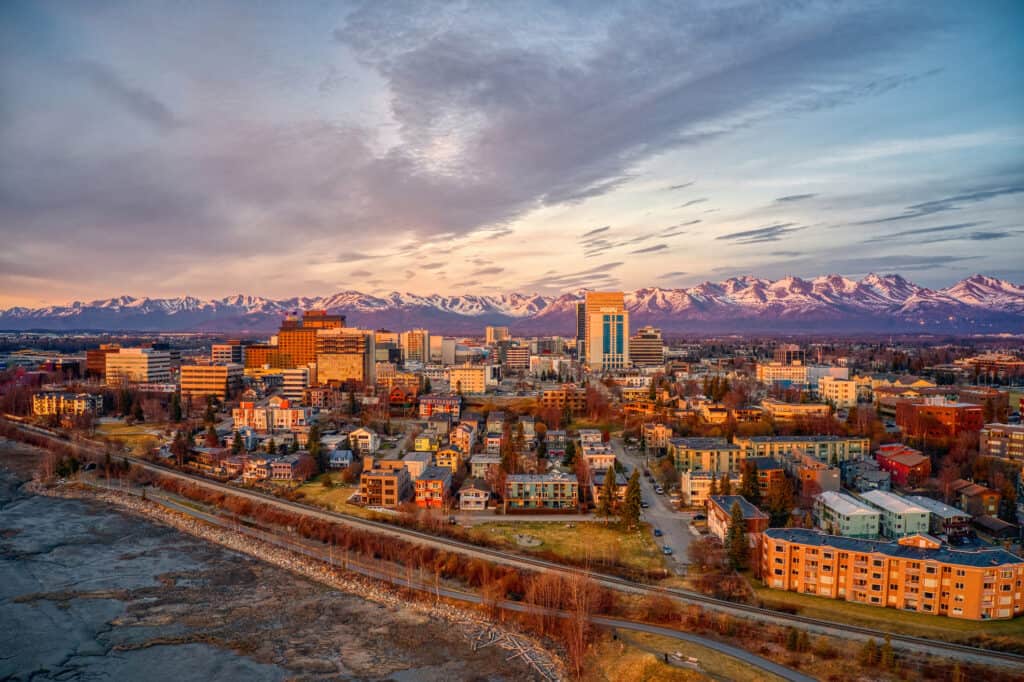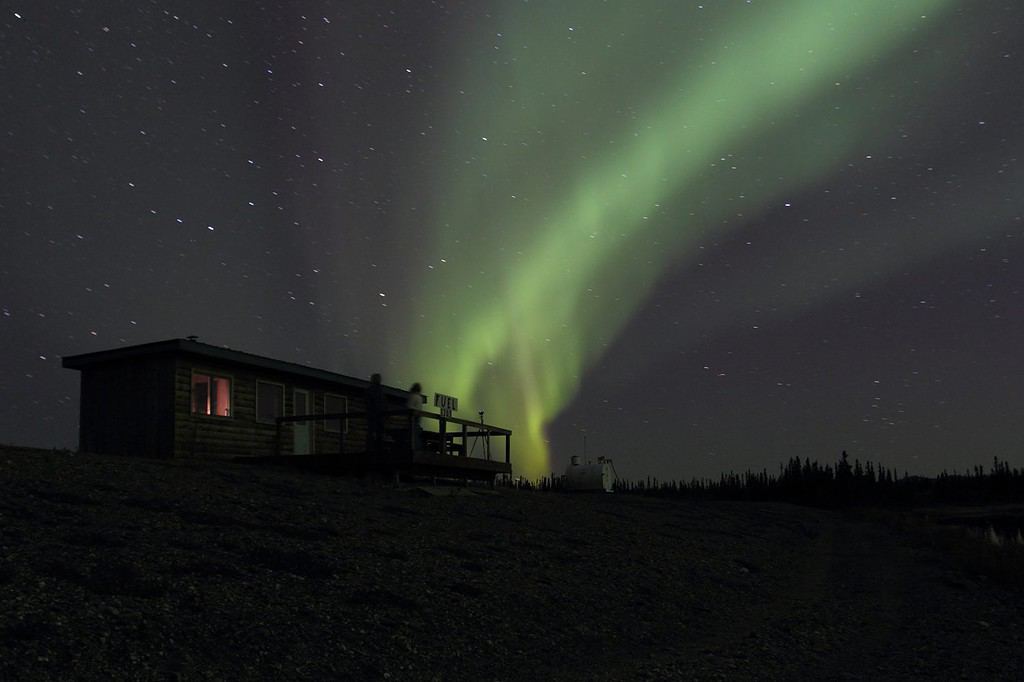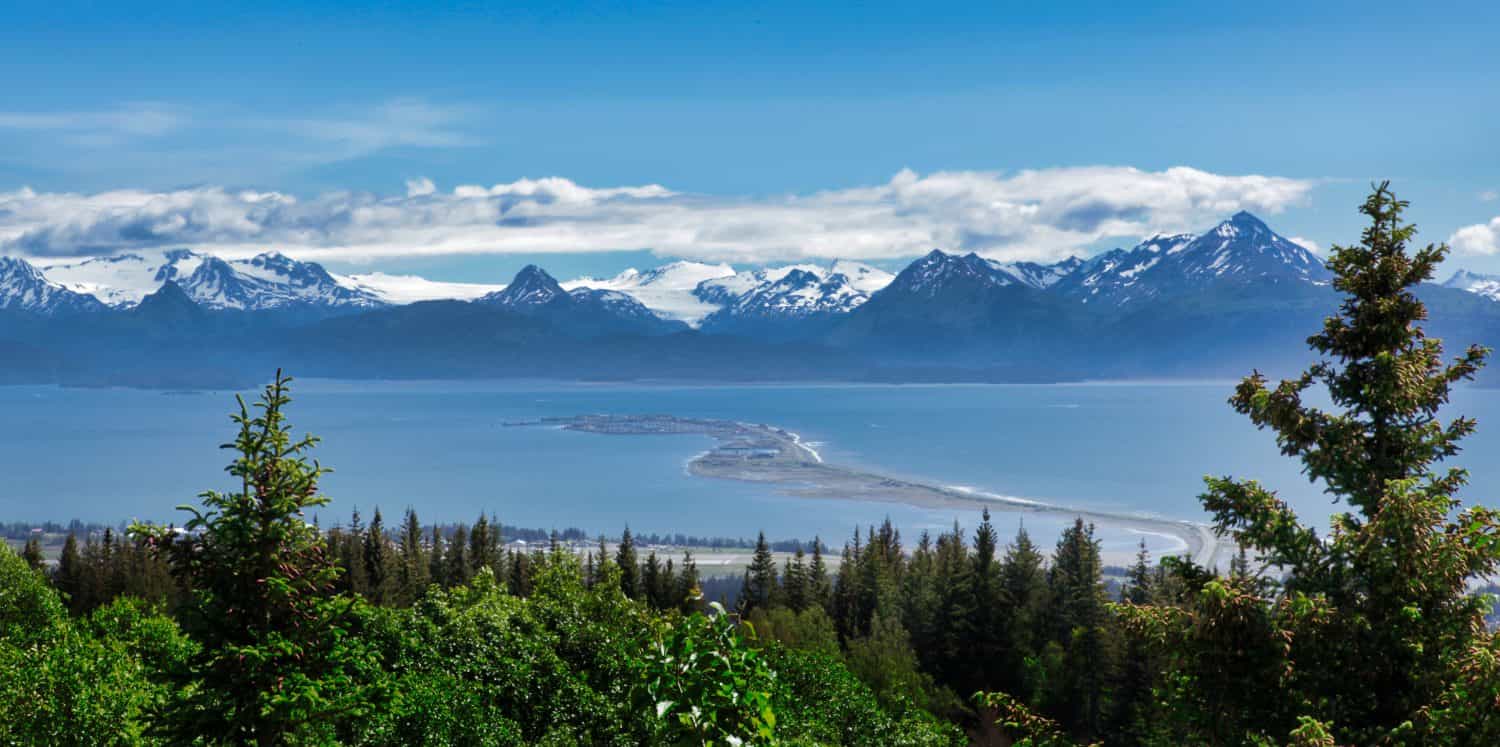Although it has a land mass that stretches for over 600,000 square miles, Alaska is home to a population of just over 732,000 residents. Although the state is sparsely populated, it has experienced significant population growth over the past 50 years. Keep reading to learn why people are flocking to Alaska and five reasons why people love the Last Frontier.
For thousands of years, the area’s vast wilderness has been populated by Alaska Natives. These cultures have utilized traditional fishing and hunting methods to survive in the region’s remote landscapes. As of the 2014 census, Alaska Natives and American Indians make up 18% of the state’s population.

Alaska is known for its breathtaking mountains and majestic valleys.
©Penny Richard/Shutterstock.com
Gold Rush Growth Through WWII
Before becoming an official state in 1959, Alaska was a U.S. territory. Attempts to record the territory’s population during the mid to late 1800s were incomplete, but Alaska’s first census was conducted in 1880, revealing a population of 33,426 people.
When Alaska experienced a gold rush from 1896-1897, it brought an explosion of miners and prospectors to the southeastern region of the state. Alaska’s new residents spurred growth in cities like Haines and Skagway. The 1900 census showed Alaska’s population had nearly doubled in 20 years to 63,592.
After the gold rush died down, the state’s population stayed steady at around 60,000 through the end of WWII. During the war, the Alaska-Canadian Highway (ALCAN) was completed, bringing another period of rapid growth. From 1951-1952, Alaska gained 25,000 new residents, with Fairbanks and Anchorage seeing marked increases.

Alaska’s highest peak, Denali (formerly known as Mount McKinley) reaches an elevation of 20,310 feet.
©SteveAllenPhoto/iStock via Getty Images
Rapid Growth in the 1970s and 1980s
Alaska’s population saw another boost in the mid-1970s when engineers completed construction on the Trans-Alaska pipeline. Stretching for 800 miles, the pipeline transported oil from Prudhoe Bay to Valdez. Although many workers left once the pipeline was finished, the state’s population grew by nearly 40% from 1970 to 1980.
From 1980-1989, Alaska was the second-fastest growing state in the country, with a population increase of almost 32% that decade. From 1980-1985, the state saw an average annual growth rate of 5%, but that figure declined precipitously from 1985-1989, as work in the energy sector declined.
Migrating workers and their families comprised the majority of Alaska’s population growth during the 1980s. In that decade, the state ranked 17th in the nation for migration.

The most populated city in Alaska is Anchorage.
©iStock.com/Jacob Boomsma
Most Populated Places in Alaska
Although it is divided into 19 boroughs and one additional unorganized borough, much of Alaska’s population is concentrated in the southern and central regions of the state.
Anchorage
With nearly 300,000 residents, Anchorage is the most populated city in Alaska. Located in the southern region of the state, Anchorage is bordered to the east by the Chugach National Forest and to the west by the Cook Inlet. In addition, Anchorage boasts the largest GDP among Alaska’s cities, with an economy largely driven by the energy, transportation, and tourism sectors.
Fairbanks
Located in Alaska’s Interior region, Fairbanks is the state’s second most-populated city with nearly 33,000 residents. Fairbanks is home to the University of Alaska, which draws students to the city in addition to providing jobs. The Tanana River runs to the south of Fairbanks, giving the city a more humid climate, which leads to intensely cold winters.
Juneau
In Alaska’s Southeast region, Juneau serves as the state’s capital in addition to being its third most-populated city with around 32,000 residents. Juneau was founded during Alaska’s gold rush and is situated along the Glastineau Channel. Much of this region is included in the Tongass National Forest, a rainforest that stretches for nearly 17 million acres.

The northern lights are often visible during the winter months in central and northern Alaska.
©Andrew Mobbs/Shutterstock.com
5 Reasons People Love the Last Frontier
Alaska has a lot to offer if you’re looking for outdoor recreation, snowy winters, and space to explore. Here are five things that draw people to the nation’s largest state.
- Natural Beauty: The state’s sweeping valleys and towering mountains are preserved in places like Denali National Park and Chugach National Forest.
- Economic Opportunity: With abundant natural resources, the state has been a prime destination for miners, construction, and oil workers.
- Low Population Density: Most Alaskan cities have fewer than 1,000 residents per square mile.
- Small-Town Living: In addition to its larger cities, Alaska has several smaller cities that boast unique history, culture, and attractions.
- Delicious Local Foods: Regional dishes highlight the culture of Alaska Natives, including foods like muktuk and dishes made with yak meat.
Thank you for reading! Have some feedback for us? Contact the AZ Animals editorial team.








